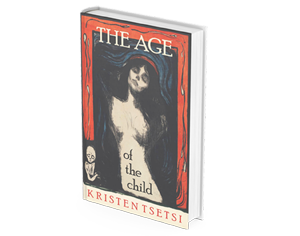# The Complex Dynamics Behind the Declining Birth Rates
Written on
Understanding the Baby Bust
In his article “Could Peer Influence Be the Cause of the Baby Bust,” Peter Coy from the New York Times presents a thought-provoking metaphor where he imagines a lab filled with women and teenage girls. These subjects are drawn to or repelled by droppers labeled “Baby Infusion” and “No Baby, Thank You.” Notably, the absence of male participants in this scenario suggests that their presence has no bearing on reproduction, raising questions about their biological role in procreation. Coy states, “If there is a peer effect [responsible for the ‘baby bust’], the same women causing it are also being affected by it…”
Coy’s portrayal as an impartial observer may detract from the deeper inquiry into why many individuals are choosing not to have children. According to a survey by the Pew Research Center, the predominant reason cited for this trend is a simple lack of desire. Interestingly, the data indicates that both men and women express similar sentiments about the likelihood of not wanting kids.
Exploring the Male Perspective
Considering the male factor in reproduction could have led Coy to a July 2022 study published in the Journal of Marriage and Family. This study highlights an increasing number of childless men who are indifferent to the idea of having children.
Coy’s examination of the intricate relationship between peer influence and pregnancy takes a misstep when he refers to studies involving teenage girls. He mentions that an increase in pregnant classmates correlates with a higher likelihood of a teenager becoming pregnant herself. However, he neglects to factor in the presence of teenage boys, many of whom report feeling pressured to engage in sexual activity and often lack adequate knowledge of contraception, as noted by researchers from Boston Children’s Hospital.
High levels of sexual pressure combined with insufficient contraception can lead to increased rates of pregnancy, as is well documented.
Acknowledging Peer Effects
Coy’s most compelling assertion is that researchers have identified peer effects on various behaviors, such as obesity, smoking, and drinking, which could similarly influence fertility. It is evident that we are often swayed by the actions of those around us, particularly when we observe the benefits of their choices. This phenomenon underscores the importance of positive role models in our decision-making processes.
Thank you for reading! If this analysis resonated with you, consider exploring my novel The Age of the Child. It tells the story of a woman, who, facing an unwanted pregnancy after the overturning of Roe v. Wade, is forced to confront the implications of reproductive rights in a rapidly changing society.
“Something interesting and endlessly thought-provoking that The Age of the Child captures are the multiple sides of pregnancy — wanting to be pregnant, not wanting to be pregnant, and what right the government has in controlling pregnancy.” — Goodreads Review
“Scathing social commentary.” — Goodreads Review
